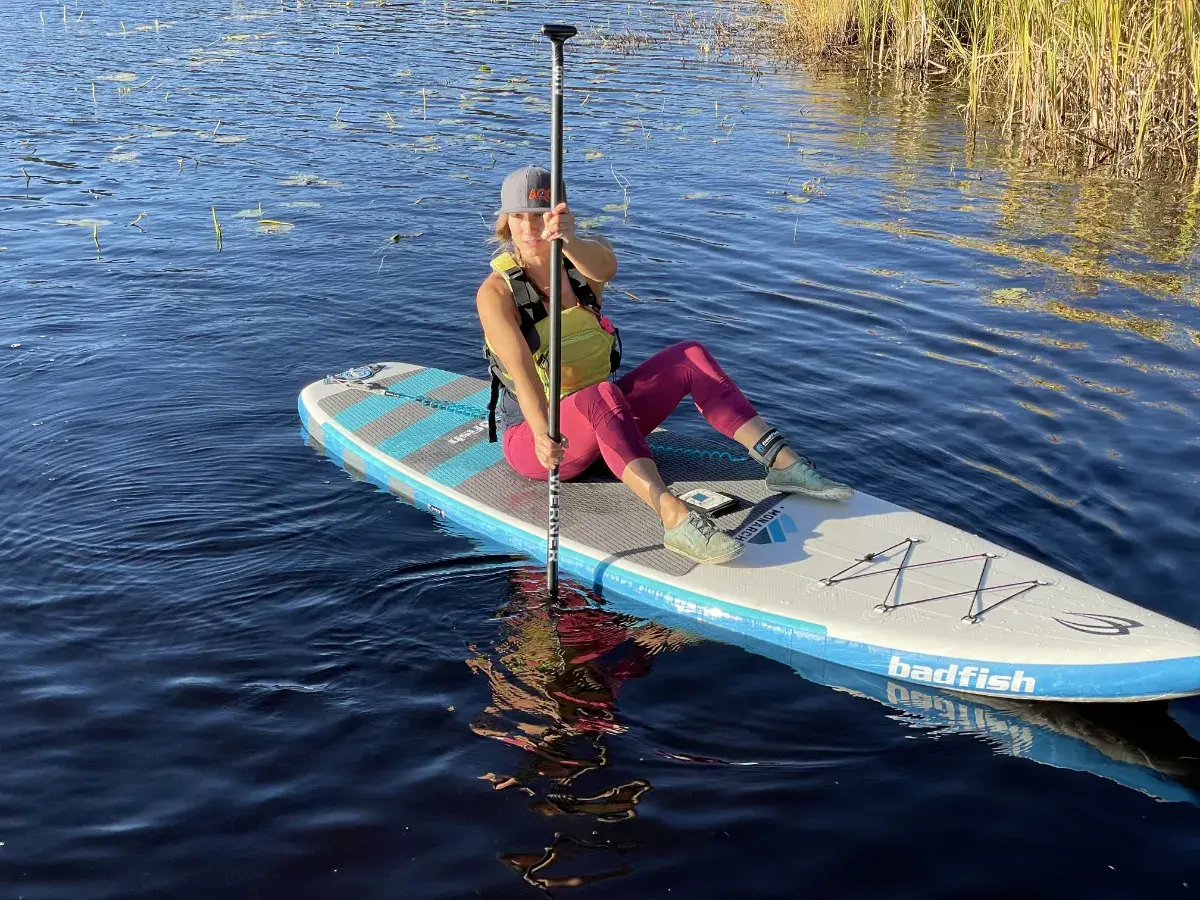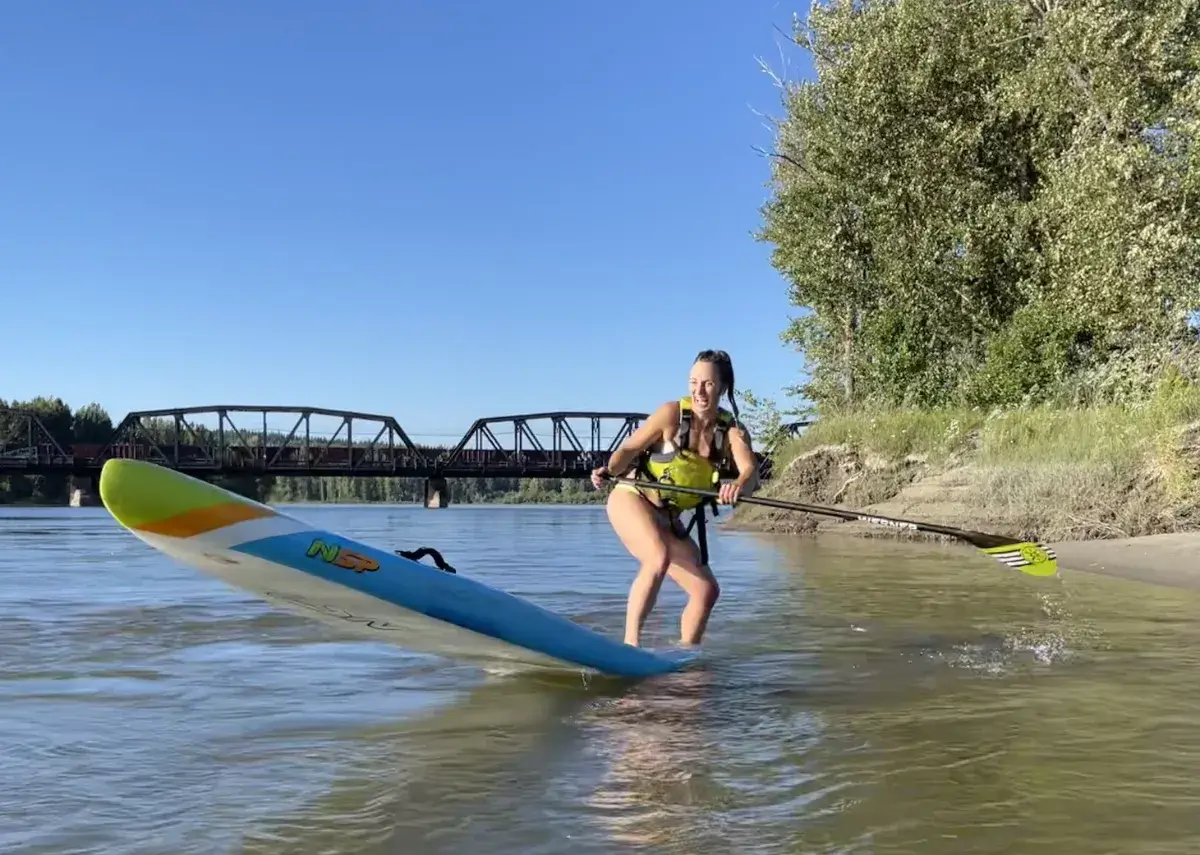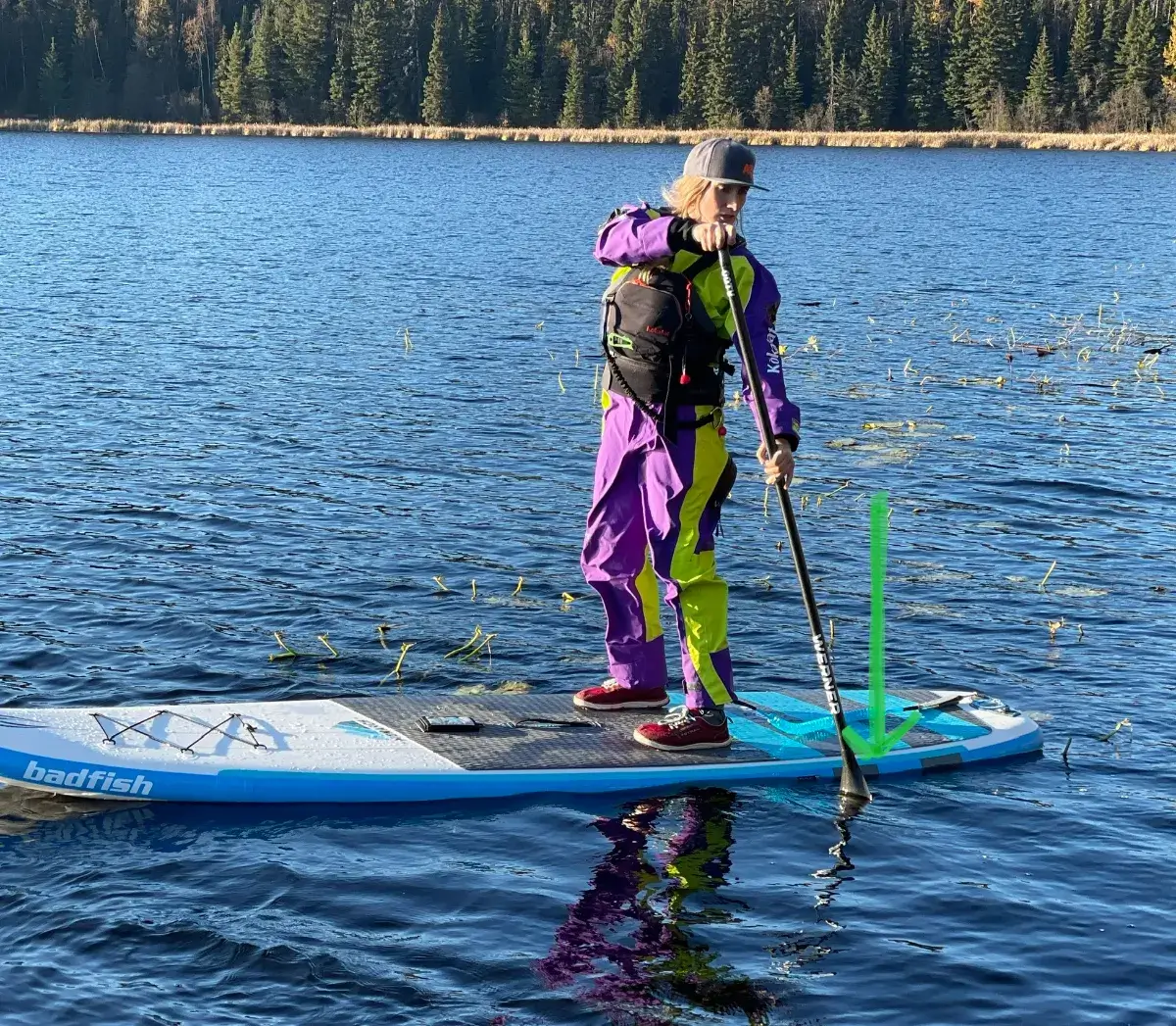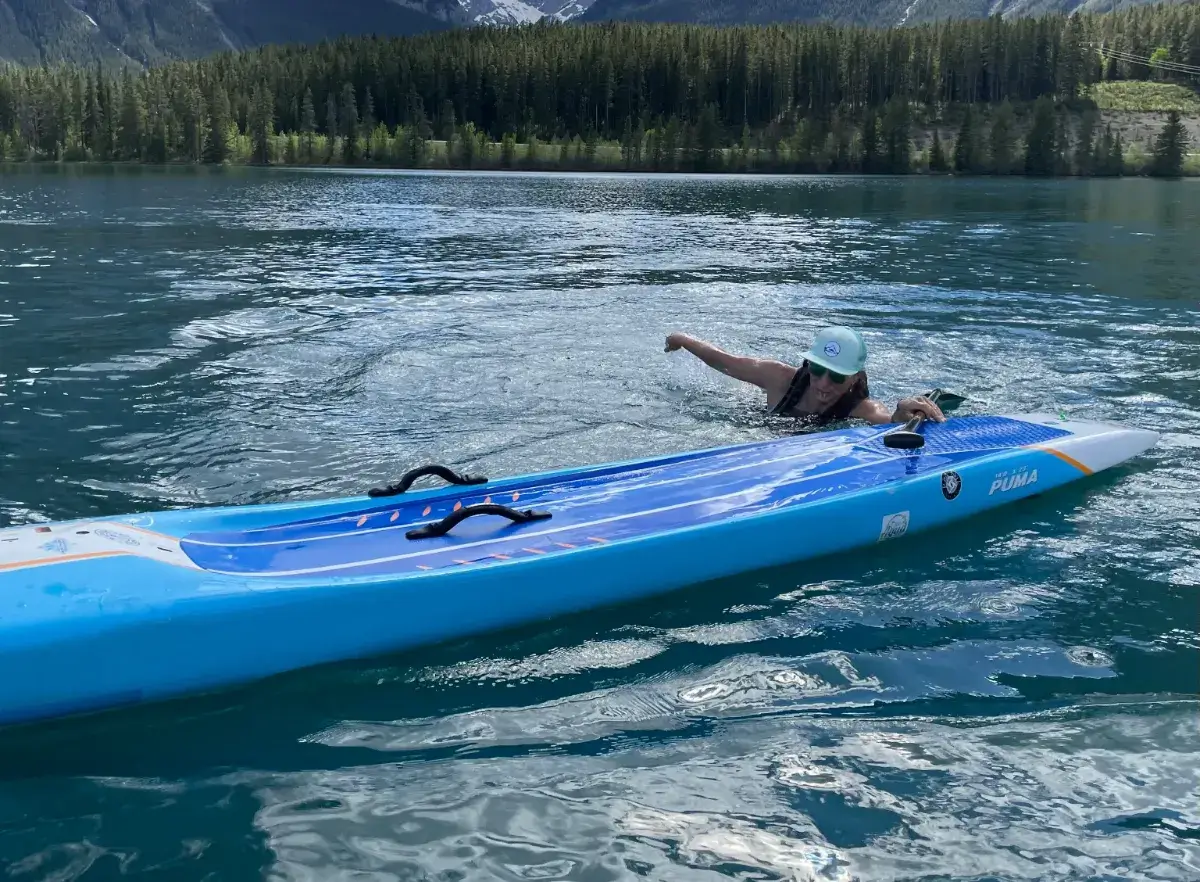The skills of knee paddling and prone paddling are important. A paddler can save energy by knee or prone paddling during difficult paddling conditions, preventing overuse injuries.
Shop AQ Outdoors SUP Collection
Being able to switch from standing to these positions can keep a paddler safe. Practicing this skill in a safe environment before a difficult situation happens will create confidence.
Knee and Prone Paddling for SUP
Knee Paddling
Why
Knee paddling is a great way to paddle when you are close to shore. It is a safe and lower centre of gravity position that will allow a paddler to move away from the shallows of the shoreline and into deep water where falling in is safer.
Body Position
First of all, a paddler needs to get into and find a kneeling position that is comfortable. This is important to do before you are forced into a situation where you have to knee paddle.
People with previous injuries may find kneeling to be an uncomfortable position, if this is an issue find a way to go from standing to sitting on the board. Here are a couple options
Once a comfortable position is determined, center yourself on the deck around the middle of the board.
The Paddle
The biggest difference between standing and kneeling is the position of your hands on the paddle. The paddler is closer to the water so the paddle length is now way too long. If the hand remains there, a paddler will demand the arm and hand to be above the level of the shoulder. This position makes the shoulder over extended, less stable and vulnerable.
Take the hand off the t-grip of the paddle and grab hold of the shaft about a foot down from the t-grip. Taking the hand off, and grasping the shaft can prevent injuries.
Grabbing the paddle over top of the shaft or coming from under it?
There has been a debate that one should now hold the paddle like a kayak paddle, or that one should have their hand placement alternating. From my experience, having alternating hands is easier on my body. My top hand position allows me to keep that elbow down and close to my body, keeping my shoulder safer from exposure to injury.
The Action
Paddle stroke techniques can all be transferred down to this new position. One major recommendation is to do some practice knee paddling because you use your muscles a bit differently in this position. I have paddled with some paddlers that feel less in control on their knees because they haven’t spent enough time practicing this skill.
Examples
- After a self rescue, knee paddling can get you to safety without risking falling in again.
- When it comes to the river it is a great way to run new rapids to see how the current will affect the board.
- Some river waves are easier to catch starting out knee paddling and then switching to a standing position.
Prone Paddling
Why
Prone paddling will be necessary if you ever, by misfortune, manage to lose your paddle while out on the water. When not having a paddle to propel your way through the water your hands will be used to get you where you are going.
Body Position
This is the “surfer” position for paddling. In this position the paddler is laying flat out on the stomach with the centre of the board. To know that the paddler is centred, the nose of the board should not be sinking or raised, the board needs to remain in its neutral floating position.
Paddle Position
If you still have your paddle and haven't lost it or broke it, tuck it under you. The blade of the paddle can be tucked underneath the paddler's chest with the handle pointing forwards towards the nose of the board. The paddler does a back extension just enough to lift their head up and raise their chest slightly up but not off the board.
The Action
Now the paddling part, there is no paddle to use. Prone paddling is when you only use your hands to paddle the board around. Think like a surfer. The big difference between surfing and prone paddling on a SUP is the extensive width of the board. This makes it awkward and can feel inefficient.
Examples
- If you happen to lose your paddle, you can prone paddle to safety.
- It is a way to paddle a rescued unconscious person ( this is a separate safety skill that can be learned in a lesson)
Knee and Prone Paddling for SUP Final Thoughts
Practicing safety skills is an extremely important habit to get into. Either knee paddling or prone paddling could save a paddler from ending up in a dangerous situation. Take a few minutes each time you are out paddling to play and experiment with these two techniques. You will never know when they may come in handy.
“Dreams don’t work unless you do”
Kimberley Kenyon
Badfish Team Athlete
Kokatat Team Athlete
AQ Outdoors Whitewater SUP
Advanced and River 1 SUP Instructor Paddle Canada
@borntoboard.ca
Shop AQ Outdoors SUP Collection
AQ Outdoors Contact
Edmonton: (p) 780 463-4892 (e) info@aquabaticsedmonton.com
Calgary: (p) 403 288-9283 (e) info@aqoutdoors.com






























































